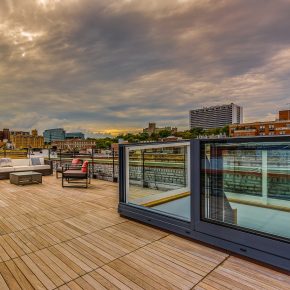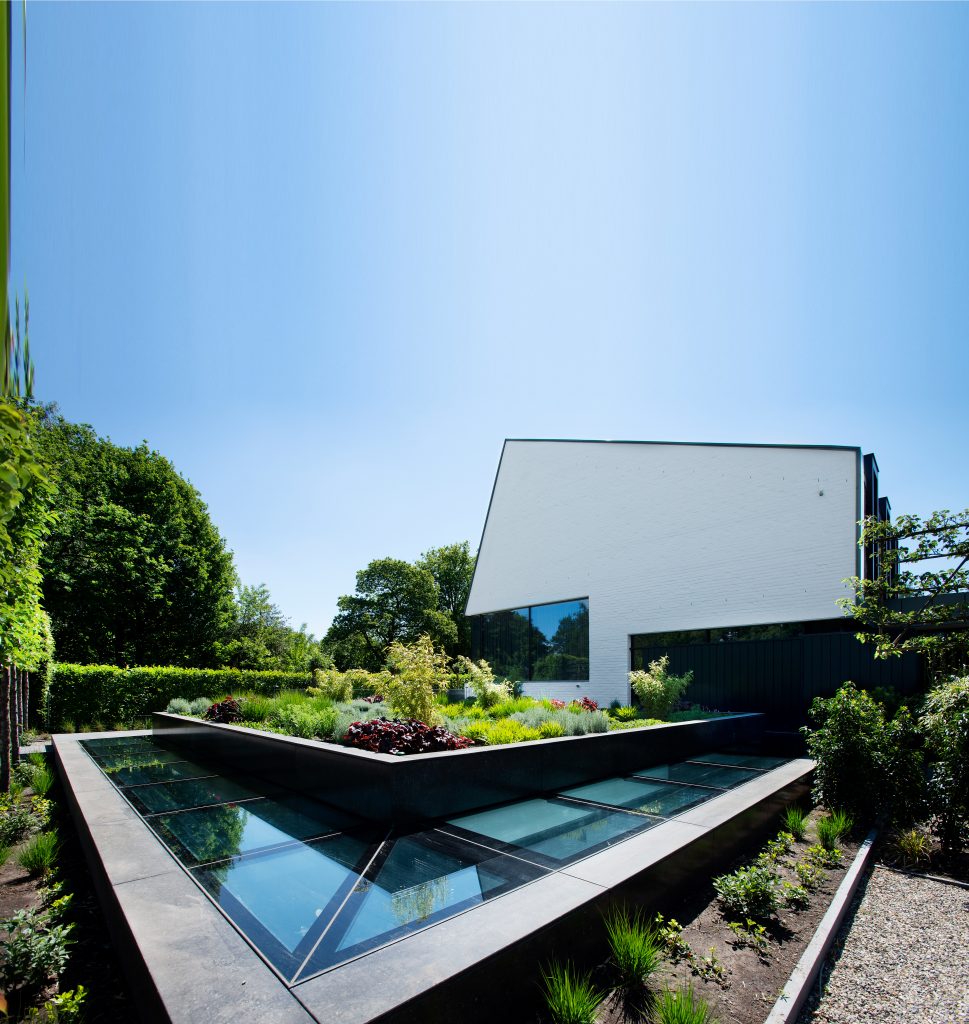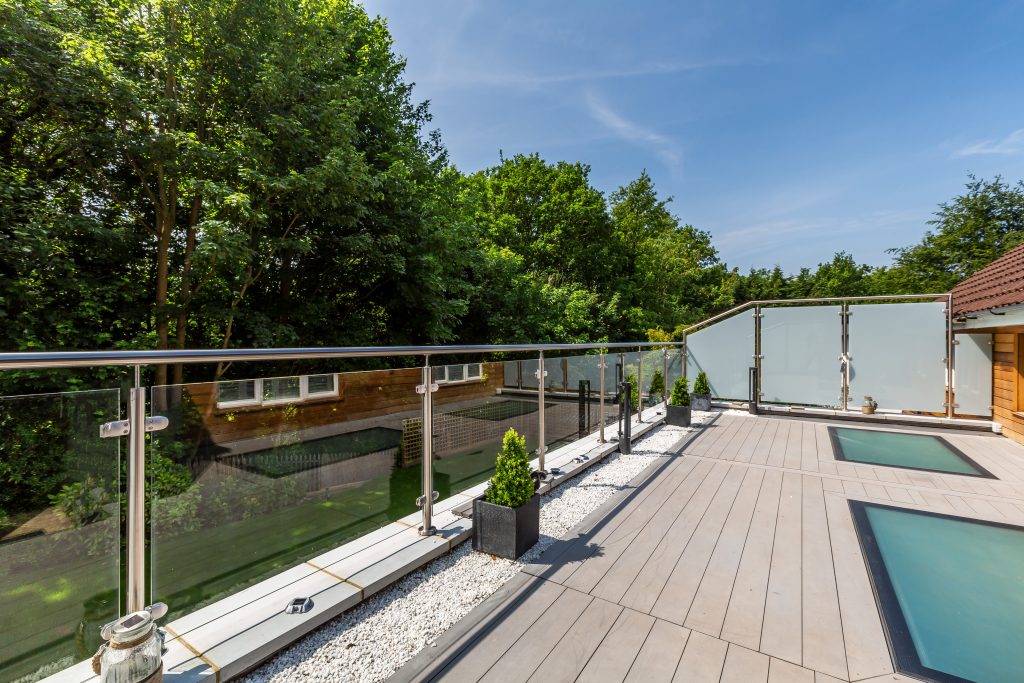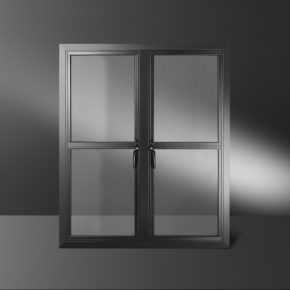
Optimise your living space creatively, with rooflights – NARM
Everyone knows rooflights are all about providing more natural daylight – but you can also consider how they can create new and often unexpected ways to make more of your valuable living space. Ian Weakford, representing NARM, the National Association of Rooflight Manufacturers, explains more…
“Mention the word ‘rooflight’ and most people would think of a typical, hinged ‘roof window’ for use in pitched roofs, or one of the increasingly popular flat glass rooflights for flat roofed extensions.
However, the term ‘rooflight’ can be applied to a huge range of different products, all designed with the primary aim of delivering high levels of natural daylight to building interiors, but each offering different options in terms of aesthetics and functionality.
So, if you’re planning on a self-build project, or maybe looking to renovate or re-model your existing property, here are a few ideas to consider:
Roof terraces with a daylight-inspired twist
If your property has any areas of flat roofing, have you ever considered the possibility of creating a roof terrace? These are becoming increasingly popular in urban areas where living accommodation and outdoor spaces come at a premium – and rooflights can play a big role in their success.
First, you’ll need to consider the roof construction and confirm with your architect or builder that it can support floor loadings. Easy access can then be gained to your terrace using sliding box-type skylights.
These units are available in a variety of glazing configurations designed to be fitted within the existing building structure, together with an internal staircase from the room below.
They provide easy, secure access for regular use, plus the added benefit of natural daylight flooding into the staircase and the room below.
For maximum daylight utilisation below the terrace, you could also consider ‘walk-on’ rooflights, set into the floor substrate of the terrace. These make a stunning feature and a real talking point.
Non-slip, ‘obscure’ glazing can be specified for safety and privacy, without overly compromising light transmission. It is important to note, however, that walk-on rooflights are designed to floor loadings, so they are much thicker, heavier, and usually significantly more expensive than conventional rooflights (which should never be walked on).

This image and the above image courtesy of Glazing Vision
Flood your basement – with daylight!
Many older properties feature useful basement space which is often used only for storage, simply because without natural daylight, a basement isn’t a particularly pleasant place to spend time in.
Walk-on rooflights are actually see-through flooring. So what’s to stop them being used inside a property, to allow daylight to penetrate the floor? In this way, a properly tanked, waterproofed basement can be transformed into comfortable and healthy living space.
Positioning the walk-on rooflight in close proximity of an external window can deliver a high level of daylight to the basement below. Basements rarely extend beyond the external walls of a property, but where this is the case, the options are even greater, with the possibility of setting walk-on rooflights into paved external areas above the basement.
Convert your loft to living space
Everyone knows that on suitable properties, loft conversions are the simplest and most cost-effective way to maximise living space – and there are many options on the market for delivering daylight under roof spaces.
Dormer windows are an effective solution, but can be costly to construct and may contravene local planning regulations. For the majority of properties with pitched roofs, roof windows installed ‘in plane’ with the pitch of the roof, are the ideal and cost-effective solution. These can be hinged to allow ventilation and easy cleaning.
A wide range of designs are available, including ‘heritage-styled’ roof windows, which mimic traditional designs and may provide a solution for building owners in conservation areas.

Image courtesy of Roofglaze
Extend your property – with minimal loss of daylight in adjoining rooms
A drawback for some ground floor extensions, is the resulting reduction in light levels in the room adjoining the extension. Carefully positioned rooflights can overcome the problem, bringing high levels of natural daylight to the extension and the adjoining room, as well as providing an attractive feature.
For flat-roofed extensions, lantern-type designs, or the very popular flat glass rooflights, are ideal. It’s worth remembering that depending on the size and aspect of the room, rooflights can deliver up to three times the amount of daylight compared to vertical windows.
For areas with ceilings under a pitched roof, ’light tubes’ can provide an effective solution. These are rooflights mounted over a reflective tube which penetrates the roof cavity and delivers daylight via a translucent fitting in the ceiling of the room below.
Think outside the box and create a stunning feature
The first and obvious function of every rooflight, is to increase light levels. However, with so many designs available, there are countless options for creativity.
As the UK trade body representing rooflight manufacturers, NARM (National Association of Rooflight Manufacturers) is made aware of interesting rooflight applications all over the country.
One fascinating and possibly unique example is a private home in Scotland with a home observatory, facilitated by an opening rooflight which allows a high powered telescope a clear view of the sky.
In others, rooflights have been positioned to create aesthetic features or changing lighting effects. Others still feature automatic opening mechanisms, connected to rain sensors, thermostats, remote controls and even software-controlled building management systems. The possibilities are endless.
For further information, please contact NARM using the contact details on our website, where you will be directed to the appropriate person.
Click here to visit The Rooflight Association's website
Visit Supplier's page
Latest news

7th March 2025
ASSA ABLOY and Lorient Showcasing at the Fire Safety Event
ASSA ABLOY and Lorient are excited to announce their debut at the UK’s fastest-growing fire safety exhibition, the Fire Safety Event, taking place at the NEC, Birmingham, from 8 – 10 April 2025.
Posted in Access Control & Door Entry Systems, Architectural Ironmongery, Articles, Building Industry Events, Building Industry News, Building Products & Structures, Building Regulations & Accreditations, Building Services, Doors, Exhibitions and Conferences, Facility Management & Building Services, Health & Safety, Innovations & New Products, Posts, Restoration & Refurbishment, Retrofit & Renovation, Security and Fire Protection, Seminars
7th March 2025
Kent Company Wins Big With IronmongeryDirect’s TradeXtra Prize Draw
IronmongeryDirect, the UK’s leading online ironmongery specialist, is excited to announce the winner of its TradeXtra prize draw.
Posted in Access Control & Door Entry Systems, Architectural Ironmongery, Articles, Awards, Building Industry Events, Building Industry News, Building Products & Structures, Competitions, Doors, Innovations & New Products, Restoration & Refurbishment, Retrofit & Renovation, Security and Fire Protection, Videos
7th March 2025
Origin launches OW-70 Soho Window to revolutionise steel-look market
Origin, the UK’s leading manufacturer of premium aluminium windows and doors, has launched its groundbreaking OW-70 Soho Window.
Posted in Aluminium Products, Architectural Ironmongery, Articles, Building Industry News, Building Products & Structures, Building Systems, Doors, Glass, Glazing, Innovations & New Products, Restoration & Refurbishment, Retrofit & Renovation, Windows
6th March 2025
GEZE UK: Seeking Support at the National Fenestration Awards
GEZE UK is seeking support from industry professionals, clients and partners at the upcoming National Fenestration Awards, taking place on 25th October 2025, where the company is hoping to be shortlisted in five key categories.
Posted in Access Control & Door Entry Systems, Architectural Ironmongery, Articles, Awards, Building Industry Events, Building Industry News, Building Products & Structures, Building Services, Doors, Exhibitions and Conferences, Facility Management & Building Services, Health & Safety, Recruitment, Restoration & Refurbishment, Retrofit & Renovation, Security and Fire Protection, Windows
 Sign up:
Sign up: